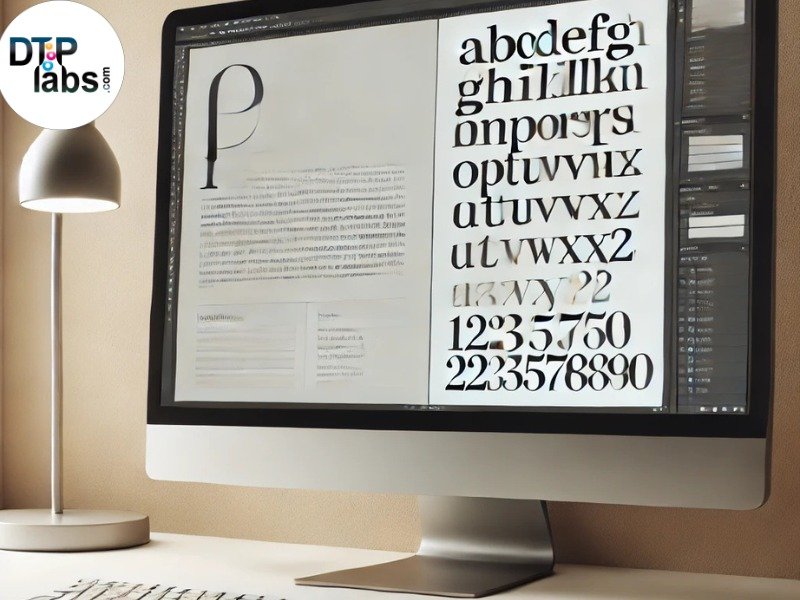Introduction
When you look at a well-designed page, what makes it visually attractive and easy to read? Often, the answer does not only reside in the choice of fonts or colors, but in the use of white space. The white space, also known as the negative space, is the empty area between text, images and other design elements. It may seem a wasted space, but it plays a crucial role in the way the content is perceived and understood. In compositionWhite space is an essential element that improves readability, improves the aesthetics and guides the reader's attention. Understanding its importance can help designers, publishers and companies to create more efficient and visually balanced documents.
Improve readability with white space
One of the most important roles in white space in the composition is to make text easier to read. When a page is crowded with dense text and a small spacing, it becomes overwhelming for the reader. White space helps to separate words, sentences and paragraphs, which facilitates the rest of the information flow. The appropriate margins, the spacing between the lines and the ruptures of paragraph all contribute to a smooth reading experience. Without enough white space, even the most well written content can be difficult to digest, which led readers to disinterested quickly.
In the publishing of books, newspapers and online items, the meticulous use of white space guarantees that the text does not seem too small. The spacing of the lines, also known as the leader, allows the reader to move effortless from one line to another. Likewise, the appropriate margins give the text room to breathe, preventing it from feeling tight together. By balancing the text with white space, the designers create a layout that is invited rather than intimidate.
Improvement of aesthetics and visual appeal
A well -designed page does not only concern words – it is how words interact with the surrounding space. The white space adds a feeling of elegance and sophistication to any document. It creates a balance, ensuring that no element goes beyond design. Whether it is a printed book, a website or a magazine, the white space contributes to the global visual appeal.
Many high -end brands strategically use white space in their advertisements and product packaging. Luxury brands, in particular, often count on minimalist conceptions with a lot of empty space to create a feeling of exclusivity and elegance. The use of white space in these cases draws the viewer's attention to the most important message without unnecessary distractions.
For designers working with typography, White Space helps to establish a clear hierarchy. By adjusting the space between headers, subtitles and body text, designers can guide the reader's eye in a natural flow. A well -spaced arrangement guarantees that the most critical information stands out while maintaining a visually pleasant structure.
Guide the orientation of the reader
White space is not only to make a design good – it also plays a key role in guiding the reader's attention. When used correctly, white space helps create a sense of orientation, leading the eye to the most important elements of a page.
For example, in advertising, companies use white space to highlight a product or message. A simple announcement with a large empty background and a small amount of text naturally attracts attention to the words and the announced product. This technique guarantees that the message is not lost in a sea of competing visuals.
In digital content, white space is essential for the user experience. The websites with a well -structured white space are less congested and more intuitive to navigate. The pimples, links and appeal sections are more effective when surrounded by sufficient space, which makes them easier to find and click. Without appropriate spacing, users may find it difficult to locate key information, leading to frustration and disengagement.
Achieve a balance in design
Too much white space can make an empty design, while too little can make it feel chaotic. The key to an effective composition is to find the right balance. The designers must take into account factors such as the size of the fonts, the alignment of the text and the hierarchy of the content to create a provision which feels both structured and open.
In magazine arrangements, for example, text and images must work together harmoniously. A crowded page with excessive text can be heavy, while too spacious design may seem incomplete. The right amount of white space ensures that each element has room to shine without competing the attention.
The white space also helps to maintain consistency on several pages. In BooksMaintaining uniform margins and line spacing ensures a coherent reading experience. In digital platforms, the use of coherent spacing in menus, paragraphs and buttons creates a transparent interface that feels polite and professional.
Conclusion
White space is often overlooked, but it plays a fundamental role in composition and design. It improves readability, improves the aesthetics and guides the attention of the reader, which makes the content more attractive and accessible. Whether in printed or digital formats, the thoughtful use of white space creates a balanced and visually attractive experience. By understanding its impact, designers and publishers can develop provisions that not only seem good, but also communicate effectively. White space is not only empty space – it is a powerful tool that shapes the way we interact with text and design.
DTP Labs is an office publishing company based in New Delhi, India. We offer book publication services, PDF conversions to words, post-traduction DTP and online location services to translation agencies around the world. To take advantage of our services, see our website www.dtplabs.com or contact us at info@dtplabs.com.


